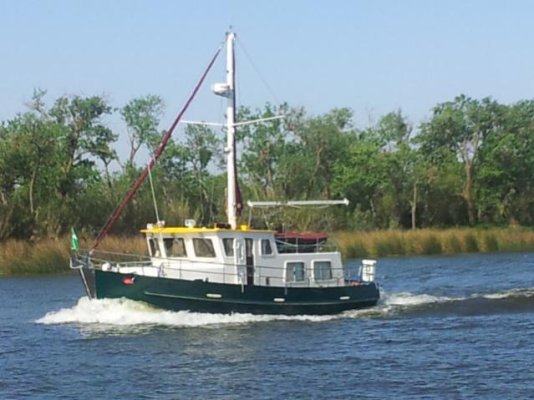Polaris4937
Newbie
- Joined
- Jun 15, 2023
- Messages
- 2
While power boats are "level" in the water when not moving, why does the stern sink - and the bow rise - when underway? Planning hulls skim over the water and displacement hulls push through the water. Semi-displacement hulls seem to have the water hitting the hull about half way back. Is it caused by something happening with the bow or by something happening at the stern?
Usually the angle of the drive shaft is downward so the prop is actually pushing up. So, again, why does the stern squat? Enquiring minds want to know.
Usually the angle of the drive shaft is downward so the prop is actually pushing up. So, again, why does the stern squat? Enquiring minds want to know.

